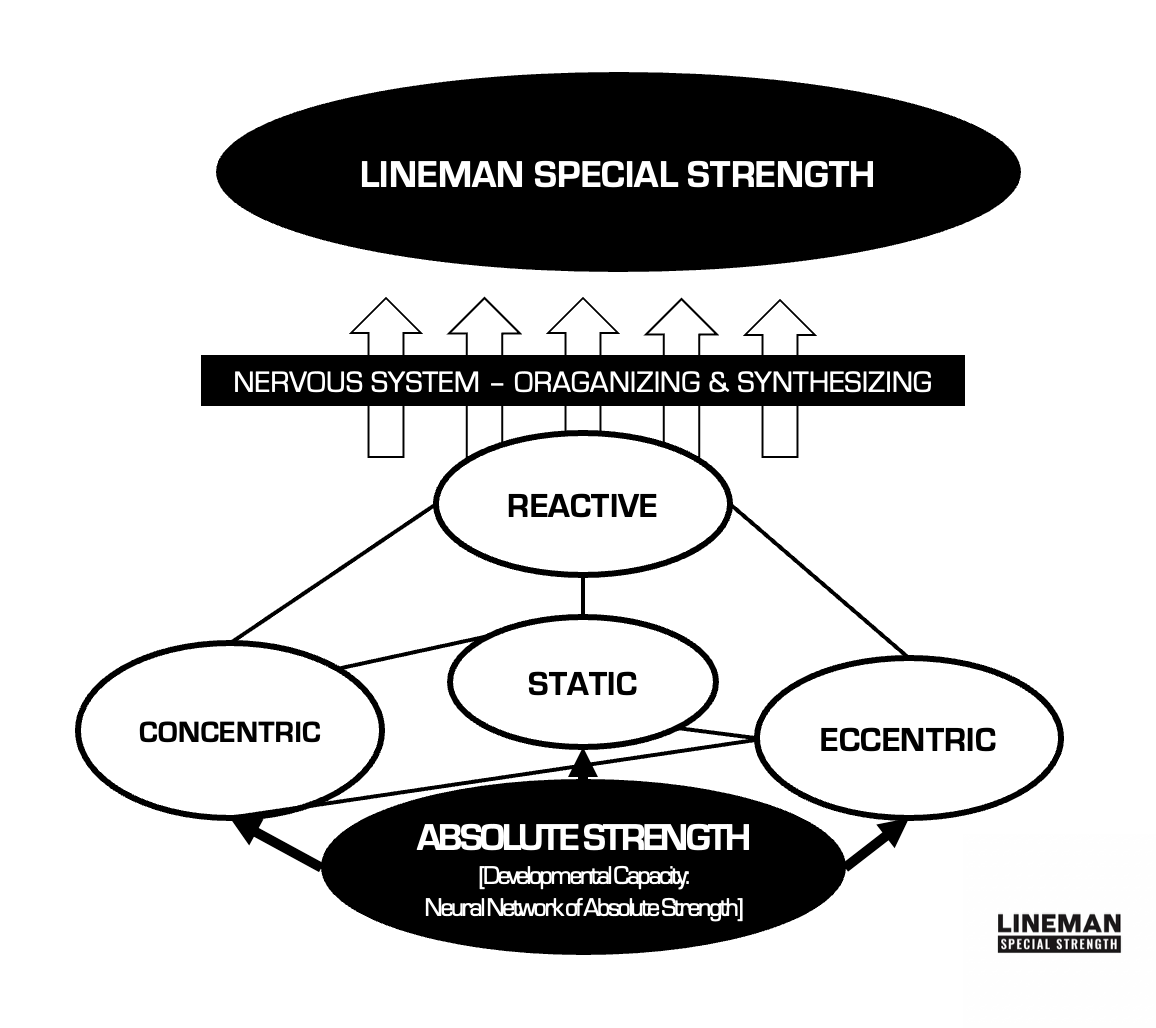The Offensive Lineman Strength Problem
Why most linemen can’t block—and why it has nothing to do with technique or skill. It is a developmental problem, not a skill problem.

Why Blocking Must Be Reframed as a Special Strength
At Lineman Special Strength, we reframe blocking—not just as a skill, but as a special strength. That doesn’t mean blocking isn’t a skill. Blocking is a phenomenon that requires both. But by recognizing that linemen must generate high-magnitudes of strength repeatedly, we reach a simple conclusion:
The lineman must train for strength and practice for skill.
Our system starts by bucketing development into two solvable problems:
Strength Problems
Skill Problems
Strength vs Skill: Two Buckets, One Correct Solution
Both buckets contain solvable problems. But if you treat a strength problem like it’s a skill problem, you’ll never solve it. To produce linemen who can repeatedly generate violence, you must first identify what kind of problem you're looking at. Only then can you prescribe the correct work.1
The Lineman Strength Problem
Our visual of blocking as a special strength (see above) makes this clear:
Strength is the base.
If the film doesn’t show violence, that’s not a mystery—it’s most likely a strength problem. You walk down to the weight room and ask the strength coach: “Is this guy strong?” If the answer is “No, his last training max he only pressed 275lbs”—you’ve found your limiting constraint. This lineman doesn’t have the neurological network of absolute strength required to block.
It’s not a technique problem. It’s not a footwork problem. It’s not a pad level problem. It’s a strength problem. And strength problems don’t get solved on the practice field.
Coach, That Doesn’t Mean You Go Full Iverson
Calm down. We're not saying don’t practice. We’re saying: you can’t coach a lineman who isn’t strong enough to express what you’re coaching. This needs to be explained directly to the lineman:
“You are not strong enough to do what we’re asking. This is a trainable problem. But it’s not a practice problem.”
Solving the Strength Problem
Once we’ve bucketed the limiting constraint correctly, we apply the solution:
Max Effort → Submax Effort → Dynamic Effort
This strategy rapidly scales the lineman’s neurological network of absolute strength.
Once we get into submax, we recommend adding dynamic efforts as well. This way the neural network is scaling up but also outputting with velocity—which means violence. At this point in the training, the film starts changing. The line started to move—literally. That’s when the coachable absolute strength athlete finally exists.
But none of this happens if we misdiagnose the problem.
Solve the Development Problem at Scale With Us
If you want to solve the development problem across your program, we built the infrastructure:
LSS University – The full course on elite lineman training systems
LSS Programming – Follow the exact training we use with pros
Not sure what kind of problem you’re dealing with? Schedule a 1:1 consult. We’ll help you bucket it and give you the means to do so with our LSS Ebook + Recovery Templates.
Questions about today’s topic? Click the button below to leave us a comment.
If you found this post valuable, share it with a fellow coach or athlete.
This logic aligns with the Law of Specificity—you get what you train for. Also known as the SAID Principle (Specific Adaptation to Imposed Demands), it means the biology adapts to the specific inputs it experiences. If a lineman trains using the Maximal Effort Method, the neurological network of absolute strength is developed—laying the foundation for possessing the ability to generate Lineman Special Strength.






